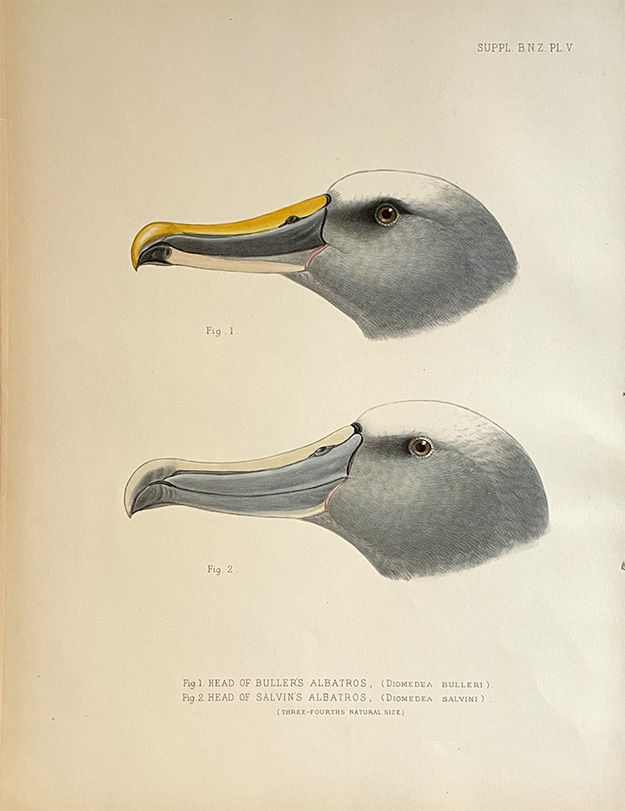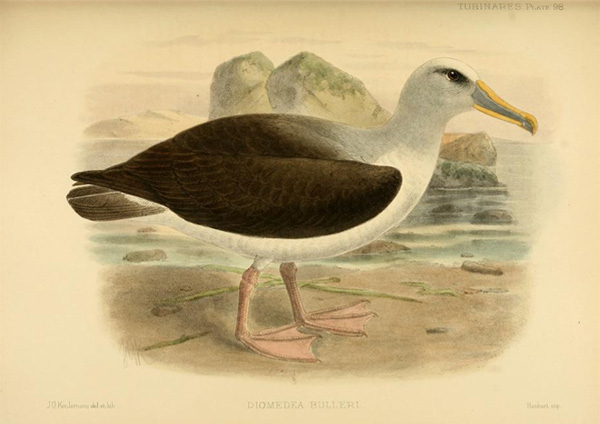


Fig. 1. Head of Buller's Albatros (Diomedea Bulleri)
Fig. 2. Head of Salvin's Albatross. (Diomedea Salvini)
According to Oliver, this seems to be a stationary species, not having been observed in any numbers far away from its breeding grounds. Off the coast of Stewart Island it associates with the shy mollymawk and like it has developed the habit of attending fishing boats and following them into port, consequently it has become one of the main casualties of long line fishing.
The Northern Buller’s mollymawk returns to the Chatham’s in late September to breed, whereas the Southern Buller’s mollymawk returns to The Snares in mid–December. The chicks fledge in June at the Chathams but August–October at The Snares.
The nest is constructed, after the fashion of other mollymawks, by the bird sitting down on the chosen site from which position it reaches out and loosens the soil all around it or, if the vicinity contains vegetation, this is torn to pieces. The debris is placed under the bird as the nest is built higher and higher. The material is added beakful by beakful and is patted down with the bill. The bird keeps turning slowly and its feathers become very dirty in the process. Most of the nest building is done by the male but both birds share in the incubation.


Buller's mollymawk, Diomedea Bulleri.
| Taxonomy | |
|---|---|
| Kingdom: | Animalia |
| Phylum: | Chordata |
| Class: | Aves |
| Order: | Procellariiformes |
| Family: | Diomedeidae |
| Genera: | Diomedea |
| Species: | bulleri |
| Sub Species: | bulleri, platei |
Buller's Albatross, Thalassarche bulleri
Endemic bird
80 cm., 3 kg., Southern Buller has silvery white forehead against light grey crown, black patch around eye, neck grey with sharp margin on chest from white underparts, rump white, tail grey, upper wings and back dark grey, underwings white with black edge, bill black with golden yellow along ridge and bottom edge, legs and feet pale bluish grey. Northern Buller similar but forehead silvery grey, darker grey on head and throat, bill more robust, feet darker.
The Southern Buller’s mollymawk, bulleri, breeds on The Snares and and the Solander Islands. The Northern Buller’s mollymawk, platei, breeds at the Chatham Islands and on Rosemary Rocks, Three Kings Islands. They are regularly seen in southern coastal waters but are uncommon in northern waters.
Poetry: —
Waiho kia whana atu ana,
He toroa awhe nui e topa ana ia ki te uru!
Let him set out on his journey,
An albatross that travels far away, soaring to the west!
Buller, Walter Lawry, Supplement to the Birds of New Zealand, 1905.
Godman, Frederick du Cane, Monograph of the Petrels, 1907-1910.
Oliver, W.R.B. New Zealand Birds, 1955.
Heather, B., & Robertson, H., Field Guide to the Birds of New Zealand, 2000.
Monday, 31 July, 2023; ver2023v1